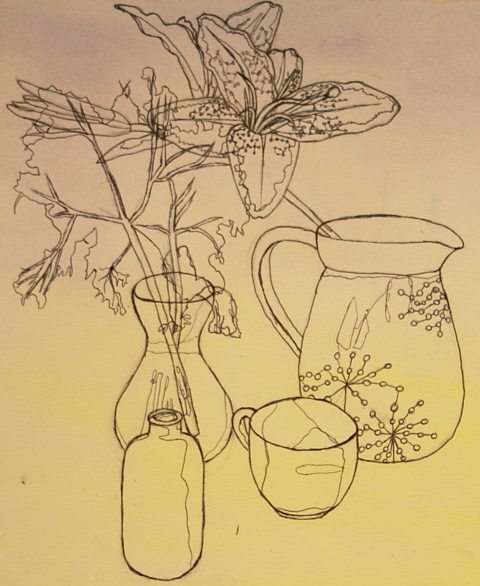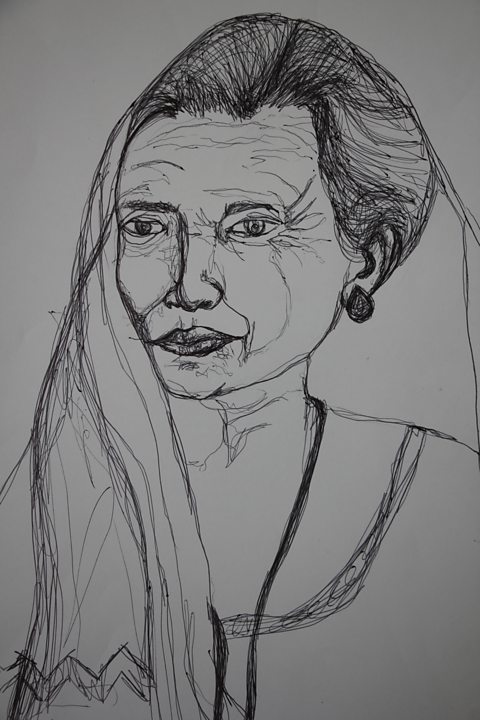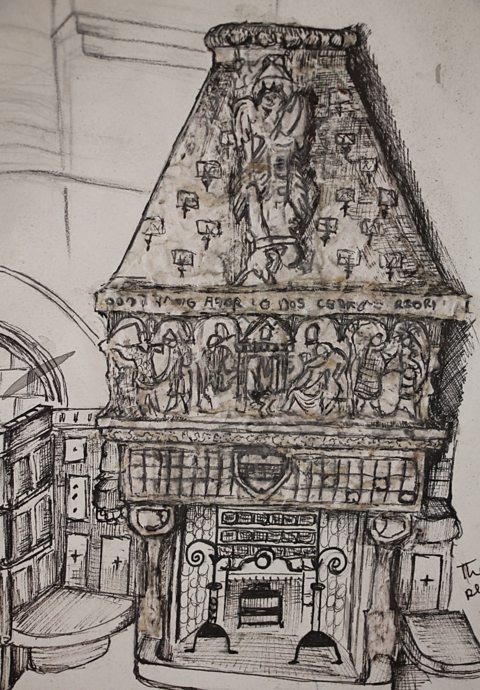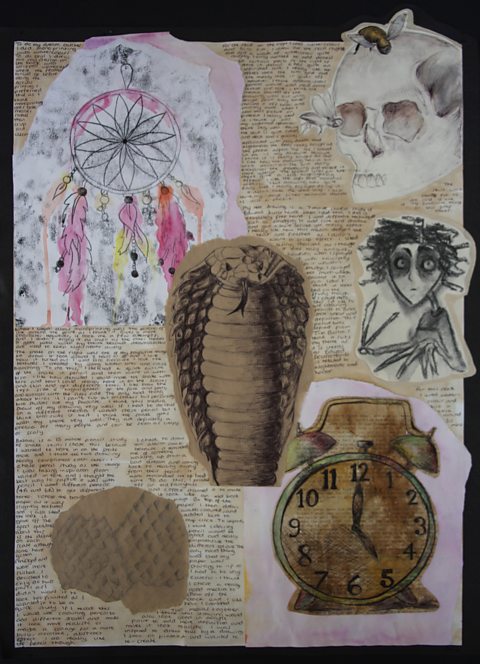Subjects for analytical drawing
Different subjects will bring different challenges for analytical drawing. Drawing a still life, portrait, the natural and built environment, or a fantasy theme will probably all suggest different approaches.

Still life
Work from primary sources - drawing from real objects is good practice and is not difficult to achieve in still life work.
Select key objects that are likely to be included in most of your development studies. Produce detailed drawings of each individual object that will feature in the still life.
Concentrate on why you have chosen each object - is it because of its form, colour, texture? Consider how each analytical drawing study could focus on these different visual elements.


Portrait
Make sure that the subject is suitable for further development. Self-portraits or portraits of friends and family will give you more access to your subject.
Produce detailed drawings of portrait studies or details of facial features. Work on the details of clothes, hair or particular objects that are important to the subject.
Photograph your subject in different lighting conditions, from different angles or in different poses. This will give you more time to concentrate on different qualities without your subject having to remain still.
Each analytical drawing study could focus on a different visual element. These might vary depending on who your subject is and the size of your composition.


Natural and built environment
Select a location that you can revisit and that you have easy access to. Draw the location from different viewpoints to vary your composition.
Make some analytical drawings on location if possible. If not, take photographs to work from later. Consider producing some close-up images which may be helpful for capturing detail.
Think about whether you most interested in the detail of a building, the colour and texture of the landscape, or the changing weather and mood. The types of analytical drawing you produce will change depending on your intentions.
Select suitable media and techniques. If working on location, materials such as pencil, charcoal, pen, pastels and watercolour may be appropriate as you can work with these quickly.


Thematic approaches including fantasy and imagination
When combining subjects from different genreA category in expressive art that relates to subject matter. Examples include still life, portraiture, figure composition, fantasy and imagination, landscape, the build environment. or developing ideas using your imagination, decide what to draw at the beginning of the process.
If your theme involves fantasy, you will still be able to produce observational analytical drawing. Think of real objects or places that you can draw. Producing studies of a location, different animals or people could help you build your idea.
Although you may rely on some secondary source materials, try to make some studies from primary source or take your own photographs.
Consider the mood you want to create. This might suggest different types of analytical drawing. Select suitable media and techniques for the qualities of the objects and subject matter being explored.

More guides on this topic
- Finding inspiration - Eduqas
- Responding to stimuli - Eduqas
- Developing ideas - Eduqas
- Creating a design brief - Eduqas
- Experimenting with materials and techniques - Eduqas
- Recording and observing - Eduqas
- Annotating your work - Eduqas
- Analysing and evaluating - Eduqas
- Assessment objectives and presenting your work - Eduqas
- Externally set assessment - Eduqas